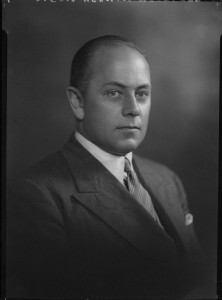10th February 1915
Today we finally meet up with Royal Engineer Captain Johnston again. He’s been busying himself, relentlessly working 18 hours a day improving the defences up and down the 15th Brigade’s trenches. I am guessing by the name that his home is R.E. Farm, now a small cemetery on the Wulverghem-Wytschaete Road. Gleichen cannot praise him highly enough. He remembers a moment Johnston was thrown into a fit of berserking rage.
And with it all he was as plucky as the devil—he seemed to like getting shot at. One night he got a ricochet bullet over his heart, but this only put him in a furious rage (if you can use the word about such a seeming mild person), and spent the next twenty-four hours in collecting ammunition and bombs and extra trench-mortars and firing them himself; this seemed to soothe him.
The 15th Brigade’s diary records this happening on the night of the 10th February. Events like this usually ended with German reprisals and little else gained.
Sector E was still a collection of disconnected trenches running down from Hill 75 (Spranbroekmolen). Men were also holed up in barns and farms behind the line, long since lost to enemy shells and woodworm. So men were stuck in the trenches throughout the daylight hours.
It must have been tempting to stick your head over the parapet, whether through fatigue or curiosity or sheer boredom, but it was usually fatal. Ernest Shephard writes:
One man Charlie Nickells killed by sniper at 7.a.m. thro’ showing over the trench.
Poor Charles Nicholls, a Londoner, had been with the battalion since the 23rd October 1914, having joined the 1st Bn from the Special Reserve 3rd Bn. He left a wife, Mary Ann but no other records I can find of his life up to this point. I think he died of wounds later.
Another Dorset man was killed too; Hilton George Miller, this time a regular, originally with the 2nd Bn Dorsets out in India, joining the 1st Bn on the 27th August 1914. This seems a strange date to be joining the Dorsets as they were passing through St Quentin on the retreat to the Marne at this point. Miller hailed from Shirley in Southampton. They are both buried in Dranouter graveyard. The Dorsets’ diary records 1 killed and 3 wounded amid a day-long musketry fight and occasional shelling.
These deaths are an indication of a slow increase in attritional casualties. The Germans now knew the ground they were facing intimately and looking down into the British lines gave them considerable advantage over their enemy. Regular rifle fire kept the casualties mounting for the British, let alone snipers. As the winter began to recede, the shells were also increasing their relentless search for death.
